Ohhh the dream ~ a New Zealand road trip! If you haven’t heard yet (which I imagine you have if you are reading this post), New Zealand is a hot bed for van life and people who want to travel around the country on their working holiday or even just for a long trip. There are sooo many beautiful places where you can stay in your van and because of its popularity, there is a huge van network and infrastructure for people who are traveling around in their vans.
I recently spent a year living in a converted van in New Zealand during my working holiday, and based on my experience I thought it would be helpful for me to write up something about buying (and selling) a van in New Zealand. In this post, I include everything that potential van lifers will need to know about buying a van, including where to buy, what to look for, how much it will cost, the logistics of self-containment, and more.
Why Buy a Converted Van?
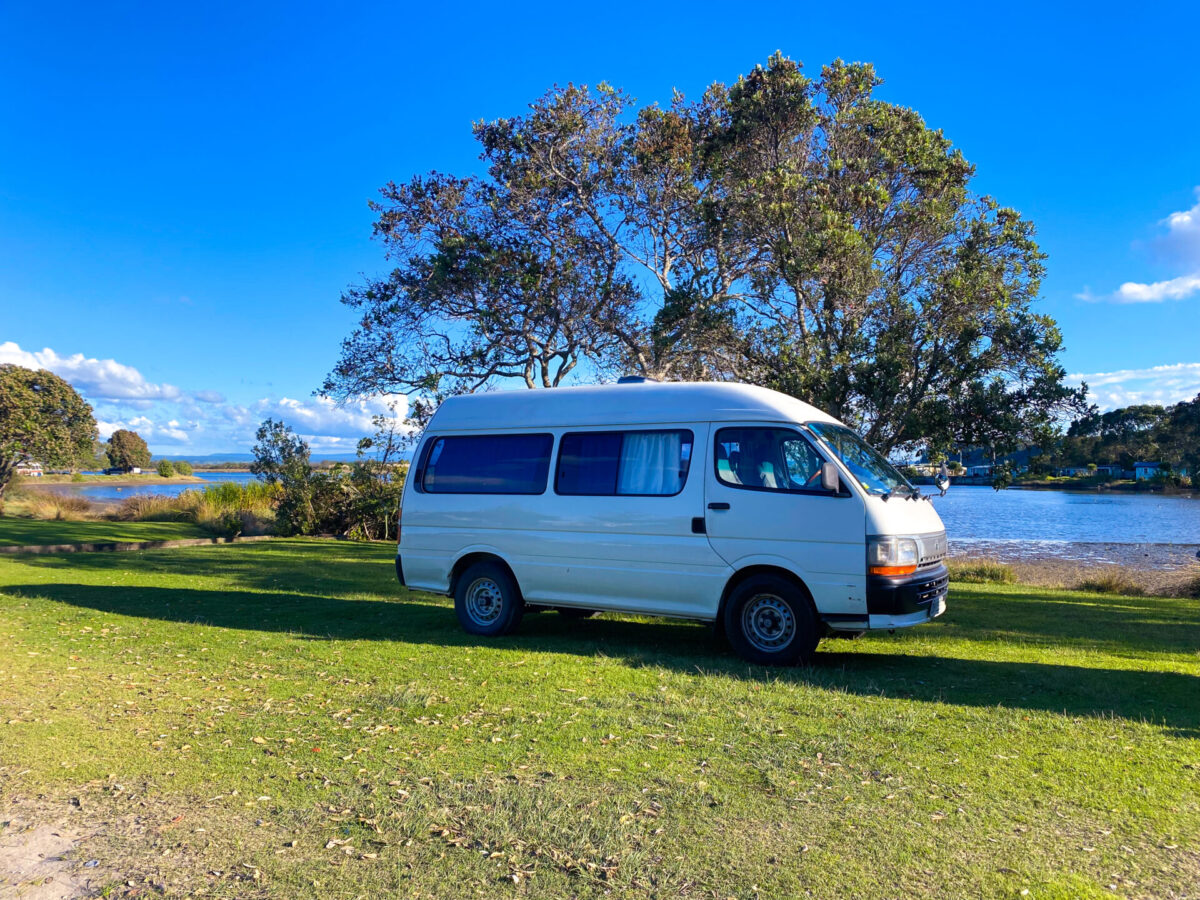
Alright, so you might be wondering what the point of buying a converted van is for a trip to New Zealand. Aside from the freedom and natural beauty you get to experience by doing this, there are some great financial benefits. Let me just crunch some numbers for you.
New Zealand is an expensive country to travel around in. On average, a night in a hostel dorm bed costs around $50 NZD. This varies by location, and sometimes you can get discounts on long-term stays, but in general you can expect prices to be around that amount. This adds up to about roughly $1,400 for a month, or $17,000 a year. Any stays in lodges or hotels will naturally be higher.
On top of that, New Zealand is a country that is best explored by car, as they don’t have a very developed transit system. There is public transport in the cities, and there are some private bus companies that take travelers to the main tourist hotspots, but for someone who is looking to travel or live here long-term, the bus system may not be the most convenient or flexible option for getting around. Renting a car or van is possible, though quite expensive and adds up over the months, so this option is generally better for people who are on shorter trips.
Most people who come to New Zealand for the long-term choose to buy a car, as this is the easiest and most flexible way to see the country. Part of the reason that buying converted vans is so popular here is because it’s a way to save on accommodation and it also doubles as your wheels. If you play it right and mostly freedom camp, that cuts down on your travel and/or living costs significantly.
In my case, we came here for a year on a Working Holiday Visa and wanted a van for three reasons: 1) to be able to live in Queenstown, a big tourist hotspot that is known for its lack of available housing; 2) so that we could have the freedom to move around and live in different parts of the country without being tied down to a lease; and 3) in order to save as much money on accommodation for travel experiences around New Zealand by being able to sell our van at the end of our trip. I’ll go into more detail about the costs of buying a van below.
Why Not to Buy A Converted Van?
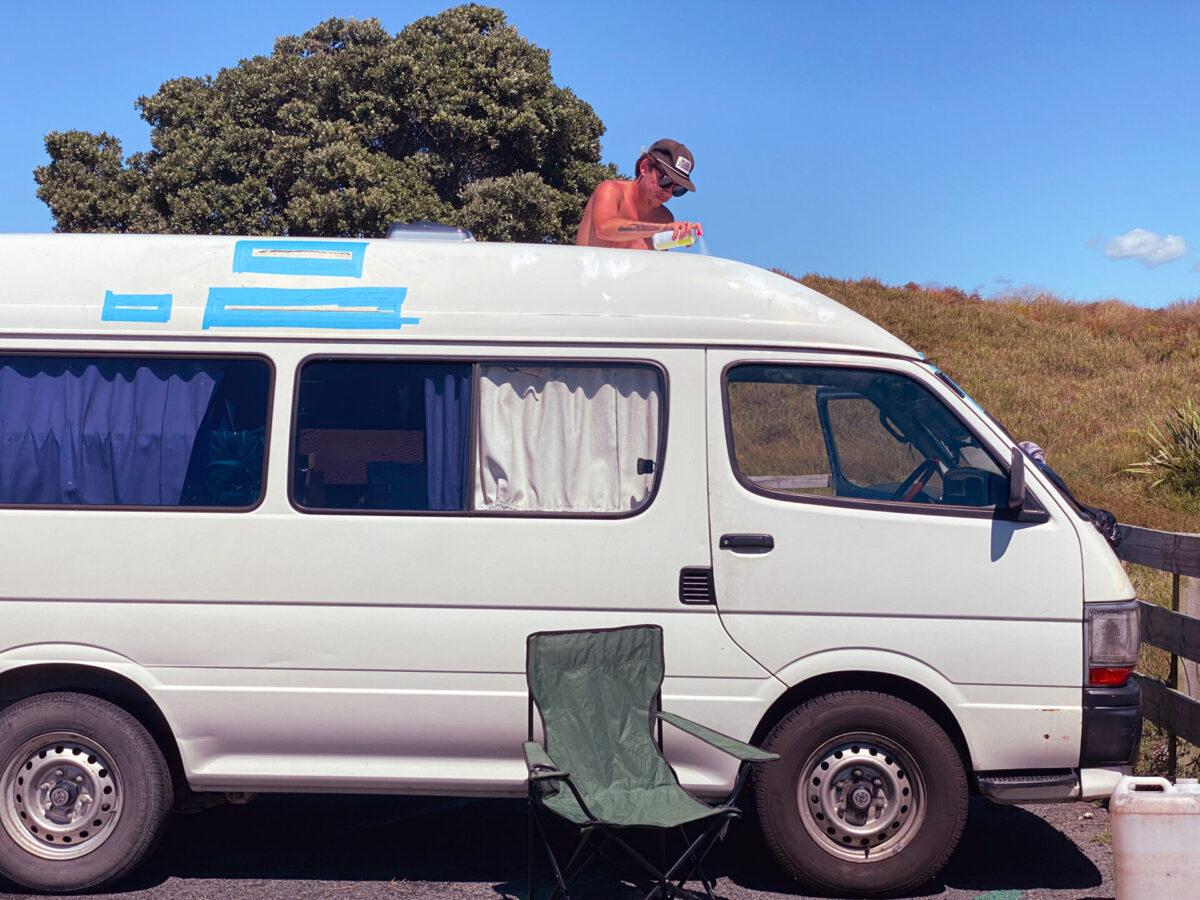
There can be some incredible financial benefits with buying a converted van, but there are definitely some downsides that I don’t think are talked about enough.
First of all, buying a van requires putting down a lot of money to reap the financial benefits. If you don’t have $10,000 NZD lying around, or don’t have a partner or friend to split the cost with, then this option will be difficult for some. There are some very cheap vans out there (less than $7,000 NZD), but they tend to come with a much smaller living space, less features, and/or more mileage, so that might not be right for everyone.
Secondly, owning a van comes with a lot of responsibility. There are registration fees, inspection fees, and routine services that you’ll likely have to pay for. The majority of converted vans on the New Zealand market are over 20 years old, and while these models tend to be the most reliable and long-lasting, the chance of having to pay for repairs is still higher than a newer van. Some people come to New Zealand for just 4–6 months and try not to pay for any of these things given that their trip is so short, understandably, but this is just a fact of being a car owner, and sometimes even if you thoroughly inspect the van and make sure all inspections and fees are up to date, you may still get caught off-guard with an unexpected repair.
Thirdly, there are many laws in New Zealand that limit when, where, and how you can sleep in your van. These come in the form of “freedom camping bylaws,” which vary by district, and “self-containment regulations” which are pretty standard across the whole country (more on these below). Both types of legislation make van life in New Zealand more complicated and restricted than you might expect, and breaches to these laws come with hefty fines, so in order to live in a van while free camping, you need to be pretty versed in these rules.
In essense, while having a van in New Zealand is a lot of fun, it can still be a lot of work and it’s your job to follow the freedom camping laws and to keep that thing maintained, up and running and in good condition for the next buyer.
Logistics & Politics of Self-Contained Freedom Camping in New Zealand
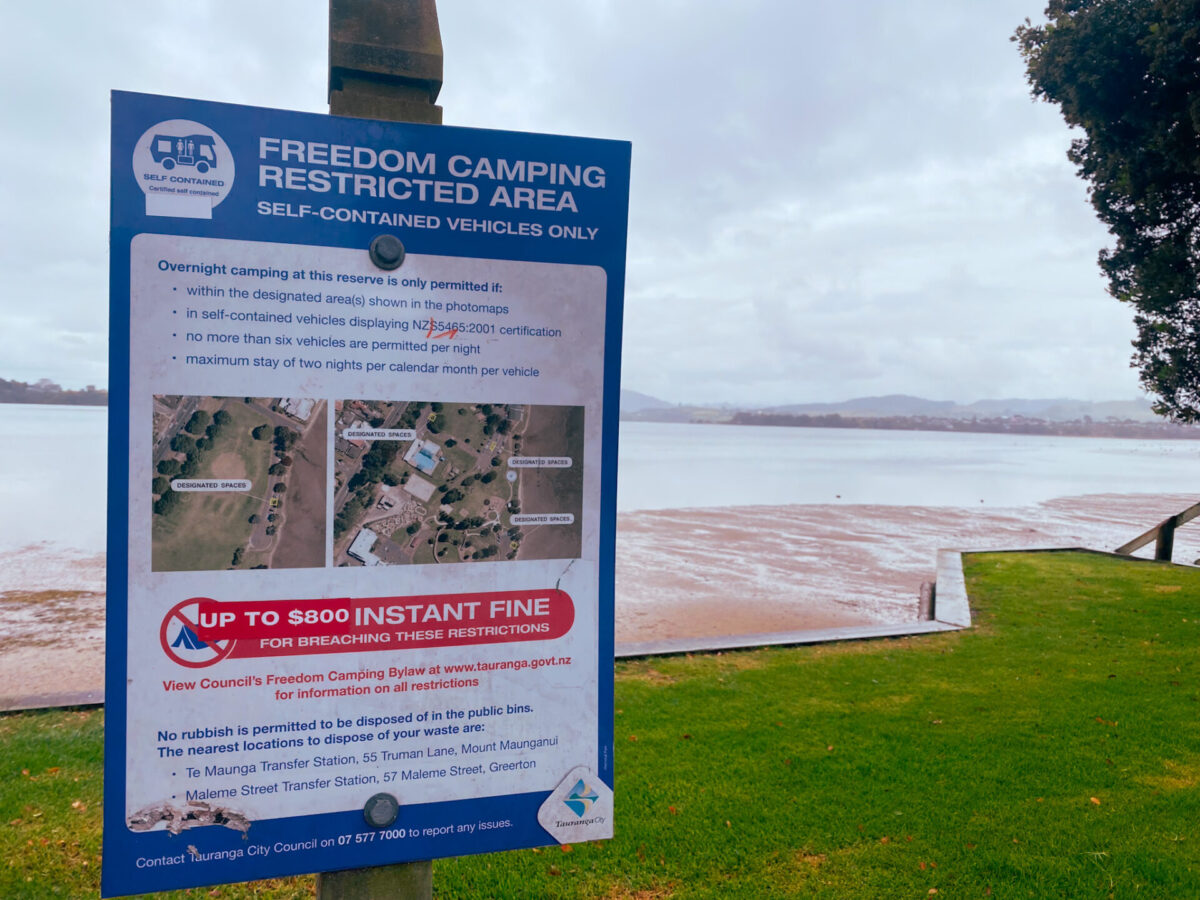
What is freedom camping?
Freedom camping is just the Kiwi word for free camping. It has a long history in New Zealand, and is mostly associated with people living or traveling around in converted self-contained vans.
What does it mean to be self-contained?
In essence, this means that a van is self-sufficient and thus doesn’t require facilities like bathrooms, sinks, or trash bins. Nowadays, all vans in New Zealand that are certified self-contained come with running water, fresh and greywater tanks, toilets, and trash cans on board. It is illegal to freedom camp without being self-contained at most freedom camping sites. There are local enforcement officers who patrol freedom camping sites, up to the discretion of the local council, to make sure everyone is compliant. They do this by checking that each van has the appropriate certification sticker (which vans get when they apply for their self-containment certificate through an approved certifier).
Why do we need to be self-contained for freedom camping in NZ?
Freedom camping has a long history in New Zealand, which started with Kiwis themselves. Due to it exploding in popularity among tourists, in the past there were freedom campers who didn’t know how or didn’t care to respect the land that they were camping on. This resulted in beautiful areas around the country being soiled by garbage and human waste for others to later discover; freedom campers were also known to start illicit fires and sometimes cause a nuisance or otherwise take advantage of the free spaces with such lawlessness that the locals got pretty fed up. One district even banned freedom camping altogether just a few years ago.
Based on what I’ve read and heard about this stuff going on in the past, I definitely don’t think it was all freedom campers, but there were enough “bad eggs” (and just a general lack of facilities) that the government had to step in and do something. In 2011, they decided to create some legislation to not only protect the natural environment where freedom camping occurred but also to regulate the act of freedom camping so that these beautiful areas could be preserved for everyone to use. In doing this, they created the above-mentioned “self-containment” laws for all vans wishing to freedom camp in New Zealand. The self-containment laws ensure that every van that wishes to freedom camp has the proper facilities to dispose of waste on-board and there are educational signs posted indicating fines for fires, improperly disposed trash, and other offenses. These laws have been updated every few years since then, with the most recent one getting passed to law in 2023, which I go into detail about below.
The new Self-Containment Laws, effective June 2025
As if the existing self-containment laws weren’t restrictive enough, in 2023 the New Zealand government passed a new self-containment law that now requires ALL vans to have a fixed toilet, which goes into effect in early June 2025. Up to now, vans were allowed to have portable toilets or fixed toilets, but this legislation changes everything and vans are now going to have to go through an expensive process to get fixed toilets installed in their vans for the new certification.
The other main change is the color of the certification sticker. With the old rules, you needed a blue sticker to prove you were certified. Now, though, you will be given a green sticker with a registration number that any enforcement officer can look up in a database. This is because with the previous blue sticker regulation, there were a lot of counterfeit stickers that were being produced so that people could freedom camp illegally without being detected. So this is the New Zealand government’s way around that.
The cost of this new law
Regardless of what happens, this legislation is a huge bummer and is effecting all van buyers and sellers from now until long after this law goes into effect. Van owners are being forced to bear the expensive burden of converting their vans in order to sell them later on, and those who can’t do that will either lose a lot of money or just not be able to sell their vans.
The first cost is the fixed toilet. The cheapest I’ve seen it on the internet is around $600. Another cost is the certification fee. This varies, but generally should be somewhere around $100 for the inspection, after which you will receive the green sticker. There is also the cost of converting the inside of a van to fit a fixed toilet and then the cost to actually install said toilet.
By my estimates, the total cost for this process might be a $1000–2000 investment for anyone who is forced to redo the toilet in their van before the law takes effect in mid 2025. Since this is still so new and I personally didn’t have to go through this process, it might cost more, or it might cost less for people who are handy and have the tools to get the job done. The NZ government also did a study on this and found that for a newly converted van, the full cost of self-containment could cost up to $5000 NZD. That is quite a hefty price tag for us backpackers!
Hopefully the cost for this change is on the low end, but either way, this means a lot of people won’t be able to sell their vans for as much as they want, and a lot of people are going to have to bite the bullet and pay for this on top of any other expenses they have for their vans. It sucks all around for all parties involved in buying and selling vans here, at least for the next year or so as these changes will come into effect. For New Zealand though, this is going to be a big source of revenue for them and a better way to control the amount of freedom campers in this country.
Other Options

If you’re not liking the sound of van life in New Zealand after reading the above, but you still want to travel around the country on a budget, then maybe you will want to consider the below options.
Instead of going through the hassle of buying, maintaining and then selling a self-contained van for your trip, there are two other great options that might suit some travellers, both of which involve a DOC (Department of Conservation) pass. They sell these passes either by the month ($95 per person) or by the year ($195 per person). This gives you unlimited access to DOC campgrounds all over the country, and foregoes you paying the normal $15 rate per person per night.
In this scenario, all you would need is a tent, camping gear, and a car, and you could go pretty much anywhere in New Zealand that has a DOC site. Most DOC sites are in great locations and offer basic amenities like toilets and sometimes cooking shelters with sinks. This is a great option and would allow you to get around the van market in New Zealand. In this option, you wouldn’t be able to stay at most freedom camping sites in the country.
You could also do this option with a non-self-contained converted van. In this instance, you wouldn’t have to deal with all of the freedom camping and self-containment laws, but you could still live the van life and get to see amazing places around New Zealand while still not spending very much on accommodation. In my experience, there aren’t very many non-self-contained vans in New Zealand, but the ones that do exist can be bought for cheaper than the self-contained vans. The downside with this option is that you may have a hard time selling it at the end of your trip without a valid self-containment certification.
If you still need help deciding, this post might help!
The Nitty Gritty of Buying a Van in NZ
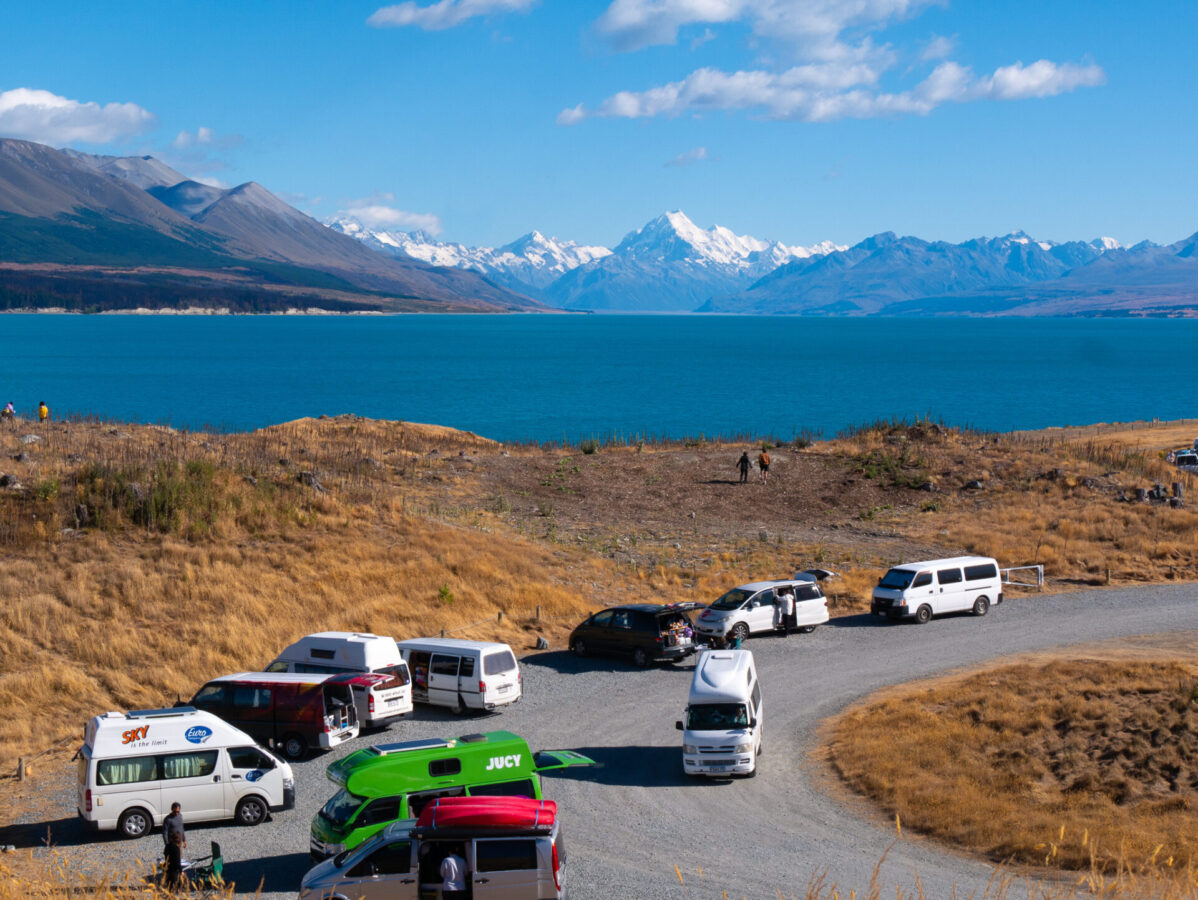
Time of Year (Market)
It’s good to know about the market well before you come to New Zealand, because this will give you a good idea of when is the best time to buy and sell your van. There are two main “seasons” for the van market in New Zealand: the seller’s market and the buyer’s market.
The seller’s market occurs around the spring and summertime in New Zealand (October-March), and is at its peak at the beginning of the summer. It’s a seller’s market because there are tons and tons of travelers who come to New Zealand for a few months wanting to road trip all around the country and get the best of the warm summer months. For this reason, during the seller’s market, the prices for vans are jacked up pretty high in comparison to the buyer’s market, because sellers know that most likely, they will be able to find a buyer for their van even if the value is inflated.
The buyer’s market occurs in the other half of the year, from April to September, during New Zealand’s fall and winter months, with the peak of the buying market from March-May, when all of the summer travelers are now ready to leave the country and are trying to sell their vans. However, at this time of the year, there are much, much less travelers arriving to New Zealand looking for a van, as it is almost the start of winter and most people don’t want to be living in a van in cold weather. So during this time, sellers are competing with each other to find buyers and have to lower their prices in order to do so. In some cases, backpackers haven’t been able to sell their vans at all or they sold it for a very, very low price out of necessity (like 50% or less of their asking price).
Where to Buy
The best place to begin your search is on Facebook Marketplace. There are also tons of Facebook groups dedicated to buying and selling vans in New Zealand. I would say these are just as popular as Marketplace when it comes to buying and selling. Additionally there are websites such as Trade Me or Travel Cars NZ that have vans for sale.
Auckland, being New Zealand’s largest city and main point of arrival and departure for most travelers, is easily the best place to buy a van because there are plenty of vans to choose from. Wellington, Christchurch, and Queenstown are all decent alternatives to Auckland, though they won’t have quite as many options since it’s not a main point of exit for most travelers looking to sell their vans.
If you fly into Auckland, a good place to look (in addition to Facebook and other websites) is the Auckland Car Fair. This occurs every Sunday from 8 am until 1 pm, and is a great option for buyers to go and see multiple vans for sale at once. It is free for buyers to attend and they offer mechanics who can do pre-purchase inspections on site.
If you aren’t able to go to the car fair, you can meet sellers elsewhere to inspect their vans and do test drives. Sometimes, sellers will come to you if you ask.
What to Look For
When buying a converted van in New Zealand, there is so much more to look at than just the car mechanics. Aside from sorting out which vans are in good mechanical condition, you also have to decide which features you want in your living situation. The price of your van will depend on these things. For example, you may find a newer converted van with less miles at the same price of a much older van with more mileage but that has more space and more living features than that smaller, newer van.
For myself, when I first started looking into this, I scoured Facebook Marketplace for weeks (before I even left the US) to get an idea of what kind of vans were available. There are tons of Facebook Groups dedicated to buying and selling vans in New Zealand, and I joined a bunch of those to continue in my research. If I hadn’t done this first step, I wouldn’t have known the difference between an indoor and outdoor van kitchen, or that mini fridges for converted vans existed. I wouldn’t have thought to consider features like insulation and ventilation. We also wouldn’t have known that we wanted a high top model so that we would be able to stand up inside the van. I cannot emphasize how important this step is before going to look at your first van. If you can, start researching van prices at least a year before you go, so you can get an idea of what the prices might look like in different seasons.
Mechanics:
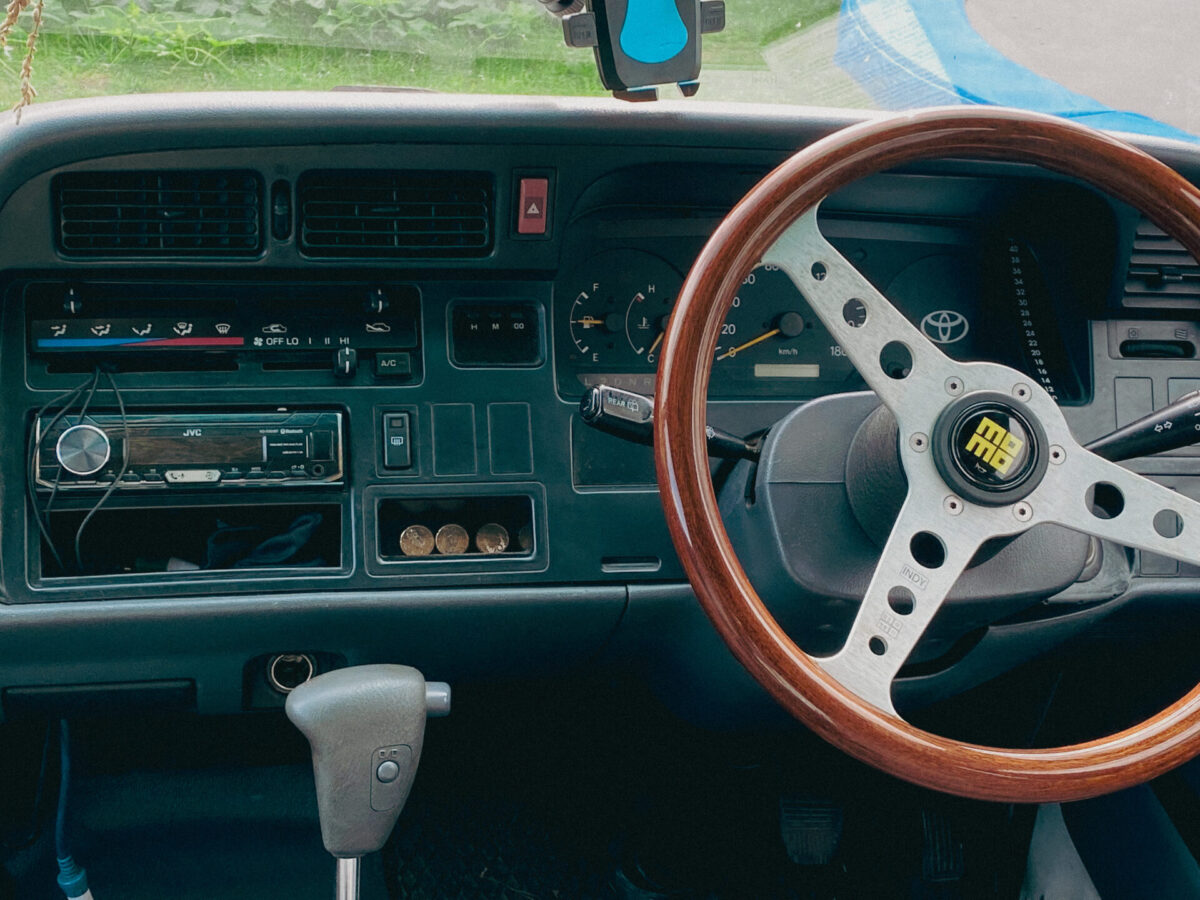
Okay so just as if you are buying any other car, the same rules apply here. You want to check everything out as much as possible to get a good idea about the condition of your van before you buy it. This includes the tire tread, in the engine, around the exterior for dents and rust spots, as well as underneath the van for any signs of serious rust. (A lot of the older models tend to develop some rust, which is normal for old cars, but anything that looks really bad should be avoided.)
In addition to your own thorough check of the van (including around the exterior, in the engine, and under the car), be sure to do a test drive. Some things to look for is to notice how fast the van drives (some don’t really go over 80 or 90 km/hour), how the breaks work, if the suspension of the van feels good, and if there are any weird noises. Be sure to check the windows, the radio, and the Ac/heat as well.
Lastly, review any service records from the owner or previous owners. They should have kept a record of their oil changes, any WoFs they went through, and any repairs that were made in recent years.
If you don’t feel confident enough or don’t know that much about cars, you can arrange a pre-purchase inspection from AA, which costs about $200 and their report is very, very thorough. They will come to do an inspection on a date agreed to by the van’s owner. The mechanic will then email you a copy of the report so you don’t even need to be there when this is going on. This is also a good option for people who have found a van on the internet but aren’t able to come see it yet in person. This will give you peace of mind about buying the car, or at least inform you of anything wrong that you may need to keep an eye on for any repairs in the future.
Cambelt vs Chain:
One thing you will see mentioned on every Facebook post is whether or not a van comes with a cambelt (timing belt) or is run on a chain. Most of the older models have a cambelt and these typically need to be replaced every 50,000 to 100,000 kms, and it can be an expensive repair. Be sure to check out previous record for proof of when the last cambelt was replaced. Any vans that have a chain will not ever need repairs for that particular part.
Engines & Mileage:
Of course, you don’t want to spend thousands of dollars on a converted van if the mechanics aren’t sound. Don’t be deterred from buying an older car — some of the best vans on the market were made in the 90s or 2000s, but some of them have been well-maintained and/or have sturdy, long-lasting engines that will get you through your trip and beyond. Some of these vans have even been given new life with a second engine.
You don’t necessarily need to be deterred from buying vans with over 300,000 kms on the odometer, because as mentioned above some engines — like the Toyota Hiace — are known to last well over 500,000 kms. In any case, even with a great engine, a van with more miles still needs its share of repairs every now and then. These high mileage vans might be a great option if you’re on a budget, because you can get a great van with awesome features for much less than vans with less than 300k, but just keep in mind that you may have to spend extra money on repairing parts.
Diesel vs Petrol = Which is better?
Some people believe that petrol is better because there isn’t a diesel tax (more on this below). This may be so, but petrol prices are higher than diesel at the pump, so it kind of evens out. The only difference is that when paying the diesel tax, you have to pay a large sum all at once.
Diesel engines generally tend to last longer than petrol engines, so in my opinion the diesel tax is not a deterrent to buying this type of van. Having a well-maintained diesel engine means that as you rack up kms while owning your van, your van will still maintain some value well into old age and you will have a better chance of selling it with higher kms than a van with a petrol engine.
WoFs, regos, and RUCs:
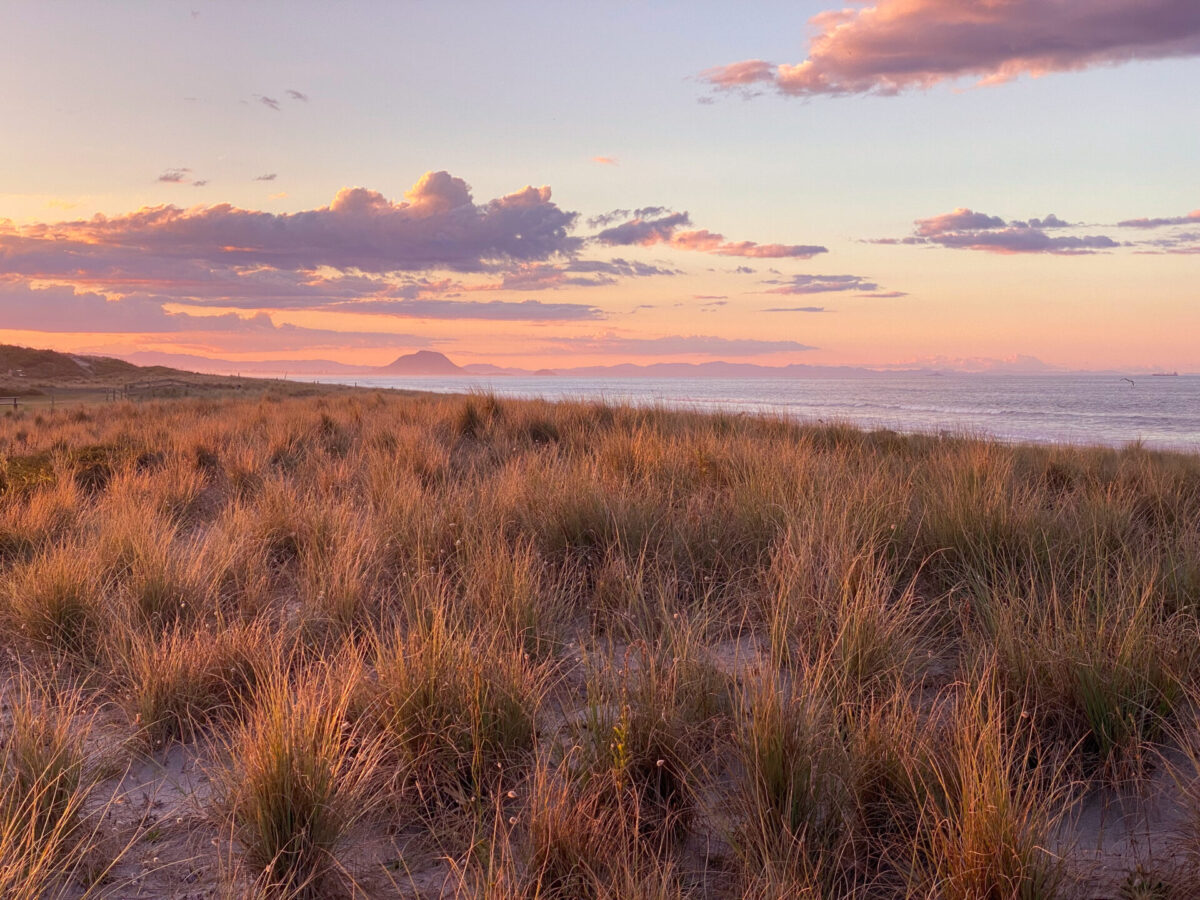
There are three New Zealand-specific terms that you will see a lot when you first start looking for your van. These are WoFs, Regos, and RUCs.
A WoF (Warrant of Fitness) is an annual or semi-annual car check that all cars in New Zealand are required to obtain in order to keep legally driving their car. These are done to ensure that all cars on the road are safe for drivers and everyone around them. All cars need just an annual WOF unless they were first registered before the year 2000 (basically, any cars made before the year 2000).
When purchasing your van, be sure to check when the last WoF was done. Technically in New Zealand it is illegal to sell a car that has a WoF older than one month unless the buyer agrees to it. If it’s about to expire, you could ask the driver to get another WoF done before you decide to purchase, just to give you peace of mind that you won’t have to pay thousands of dollars for a repair right after buying it.
Regos (NZ’s nickname for car registration) are payments made solely to continue the vehicle’s license to be on the road. There are no tests or checks done with this one, but in order to renew a registration, your van must have a valid WoF sticker.
RUCs (Road User Charges or “diesel tax”) are licenses paid for by anyone who drives a diesel or electric vehicle in New Zealand. (Petrol prices have this tax already included at the pump, so petrol drivers don’t have to worry about it.) One thing to check is that the RUCs have been all paid up or at least haven’t gone that much over – you don’t want to have to pay for someone else’s diesel tax.
Living Features:
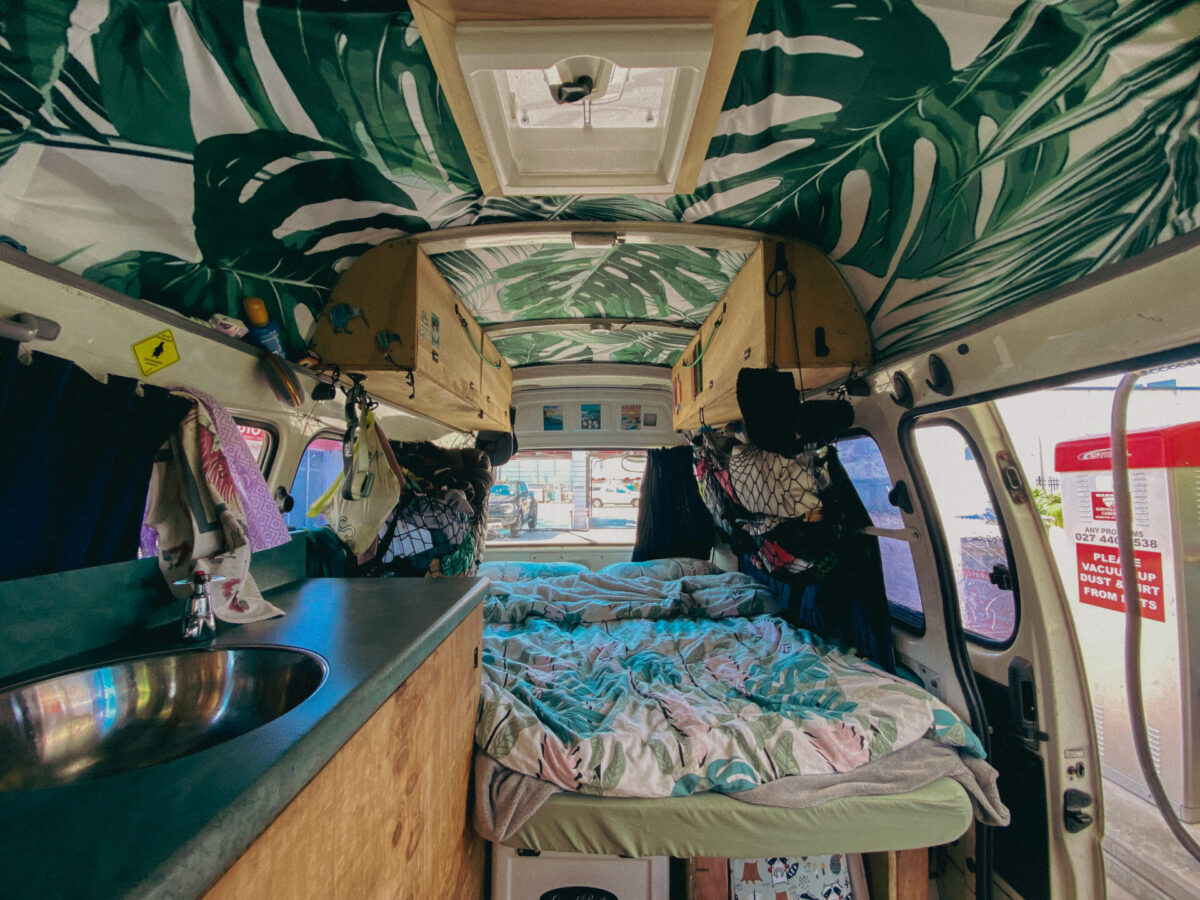
When I first started looking at vans on the market, I was overwhelmed by all of the different features available. It took me some time scouring Facebook and learning about all these options before I could decide what would work best for me and my partner.
Here is a general overview of some features commonly found in New Zealand converted vans and a little bit about each:
Hightop — These models have a higher roof and offer van lifers the ability to stand up while in the van. This is good for taller people or anyone who wants a bit more living space. Popular models that offer hightop versions: Toyota Hiace, Nissan Caravan, Ford Transit. These tend to come with a higher price tag.
Long wheel-base — These models of van are longer than the standard size and offer more space and livability. Popular models that offer a long wheel-base option: Toyota Hiace, Mazda Bongo, Nissan Caravan, Mitsubishi L300. These tend to come with a higher price tag.
Second battery — The basics of having power in your van first start with a second battery. This is pretty standard in any van conversion in New Zealand. These are hooked up to the car’s battery and gets charged anytime the car is running. These installations also require the use of an isolator, which ensures that your second battery won’t drain your car battery when the car is turned off. There are different types of second batteries, with pros and cons for each. Deep cycle AGM batteries tend to be the most durable and long-lasting ones and are a good choice for van conversions.
Sine wave inverter — The next tier of power in a van conversion comes with a sine wave inverter, which serves to convert the electrical charge safely for anything requiring more power and the use of a plug outlet (rather than a USB outlet). Not all vans have these, but they are nice to have if you want a minifridge or have a laptop that needs charging.
Solar panels — The other good thing to have for your van is solar power, which works together with the car’s engine to keep your electronics charged without solely relying on driving the car to maintain enough energy. Conversions with solar power generally come with a higher price tag.
Minifridge vs cooler/chilly bin — In New Zealand, there is a brand of minifridge, Brass Money, that is designed specifically for converted vans. These are compact in size and can run off a second battery with the help of a sine wave inverter. These are nice to have, but in my opinion I don’t think they are worth the hassle unless you have solar hookups. This is because when living off a second battery in a van, you have to be driving regularly to keep your battery charged enough to support your devices. In terms of a minifridge, if you aren’t driving enough to keep up with its energy needs, than the inside of the fridge won’t be as cold as you’d like it to be.
Indoor vs outdoor kitchen — In New Zealand, since there are so many smaller converted vans on the market, sometimes kitchens are built at the back end of a van, like out the back door of a minivan for example. These clever conversions save the inside space for a bed, storage, and seating, but having an outdoor kitchen isn’t always convenient, most especially during inclement weather or in places where sandflies rule. Having an indoor kitchen setup means that you can cook inside anytime and will always be sheltered from wet weather or biting insects. Indoor kitchens typically come with a higher price tag.
Kitchen equipment — Any van you purchase in New Zealand that’s already been converted will most likely come with kitchen equipment, such as pots and pans, plates, bowls, cups, cutlery, cooking utensils, knives and a cutting board. Sometimes there is a fixed stove built into the counter, but mostly you will find portable camping stoves which can be stowed away when not in use. Having a 2-burner camp stove will allow you more freedom to cook over just a 1-burner stove.
Convertible bed/table — Most converted vans in New Zealand come with this clever space-saving design so that you can have a bed for sleeping but during the day can convert it into a table and seating for eating meals, hanging out, or doing work.
Roof vent/fan — Ventilation isn’t something that most vans in New Zealand have, but is something you should seriously consider if you plan to live long-term in your van, especially in cold weather. Any time you cook or even take a breath, you release moisture in the air and if you don’t have ventilation, this moisture will get trapped in your belongings, in and under the bed, will increase condensation in the mornings, and if left untreated will eventually cause mold to form. Opening windows doesn’t work as well as you might think — having a vent or fan placed on the roof is the most efficient way to keep the inside of a van dry and comfortable. This is especially true for winter camping. Ventilation comes with a higher price tag.
Insulation — As with the above, insulation isn’t required but it will help shield you from outside temperatures, both the heat and the cold, and will work with ventilation to regulate moisture. These are ideal with winter living but are great for high summer temperatures as well. Vans with insulation come with a higher price tag.
Privacy curtains & tinted windows — Most vans in New Zealand come with either tinted windows or curtains or both. If you can get tinted windows and blackout curtains, this is your best combination for privacy and keeping out unwanted street lights while you’re sleeping.
Interior design & craftmanship — Some vans, especially the insulated ones, will have all wooden interiors and a beautiful setup. Others may just have the outside of the van painted a cool design. Still others might come with the basics but have some cool tapestries and decorations. The vans kitted out with all wood interiors come with a higher price tag.
Bug nets — These attach to open windows or doors and are great to have as a barrier to malicious sandflies.
Outdoor solar shower — Unless you buy a primo van, you most likely won’t have a shower inside, which means you’ll be dependent on finding gyms or other public showers to use. In this case, an outdoor solar shower may come in handy, though I’ve never used one so can’t attest to how well they work.
Awnings — Some vans have these, which open up to shelter from the sun and rain. Vans with these come with a higher price tag.
Roof racks — These are clutch to have if you have outdoor equipment that doesn’t fit in the storage under your bed. Vans with roof racks come with a higher price tag.
Outdoor gear — Most vans come with a basic camp setup, including foldable camp chairs and a table. A lot of converted vans also come with camping gear, like tents and sleeping bags, and sometimes even kayaks, surfboards, SUPs, or bikes.
How to Buy
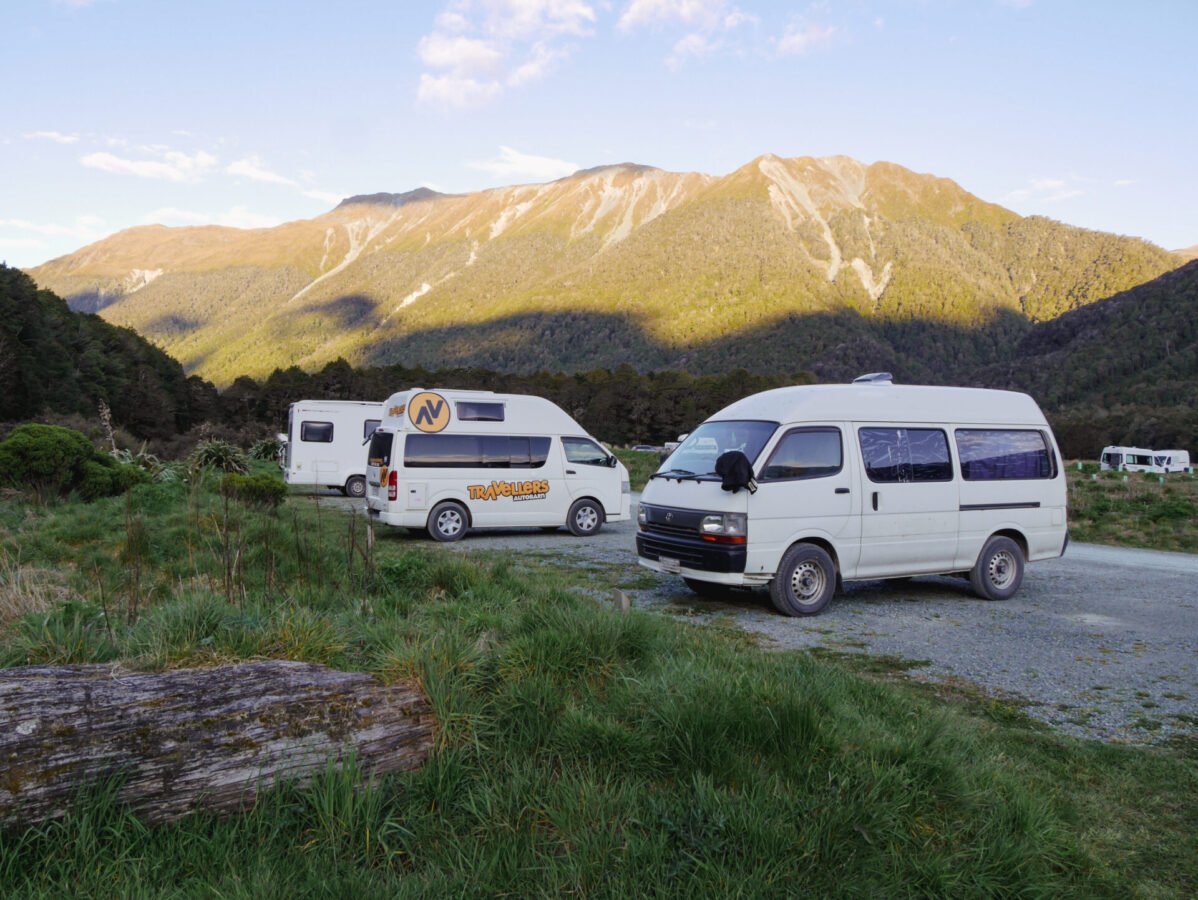
After you decide on a van, you’ll need to pay the buyer. If you don’t have a NZ bank account for a bank transfer (which is normally instantaneous or completed within a few hours), then a buyer may want cash. I’ve seen that some sellers will accept a transfer via Wise, though you have to have an account to do that and they charge transfer fees.
So from my personal experience paying in cash, my boyfriend and I had to take turns over the course of a few days pulling money out of an ATM. The ATMs we used only allowed so much cash out per transaction, and then our banks only allowed so much cash out per day. So if you don’t already have cash or a way to pull out a lot of cash at once once you get here, be sure to plan ahead so you can have cash available when you are ready to buy.
After the payment, you need to complete the change of ownership paperwork to notify the New Zealand Transport Agency (NZTA) of a car sale. Separate forms need to be filled out by both the seller and the buyer, and you should ensure that the other party has completed their side. This paperwork can be filled out by both parties online. For this you need your identification (either a NZ driver’s license or a passport) and your address. The address part can be tricky — we actually used our seller’s address at first and then changed it once we arrived in Queenstown.
How Much It Will Cost
Most converted vans on the market in New Zealand can be found at a wide range of prices — anywhere from $3000 to $30,000 NZD or more. The cheaper the van, the less space and features you will find. The more expensive versions are usually newer with less kms, decked out with all the features, and come with more space and a beautiful interior. The sweet spot of affordability, good mechanics and living features is right in the middle around $10–15k, depending on the type of van and what season you buy it.
Planning for Future Expenses
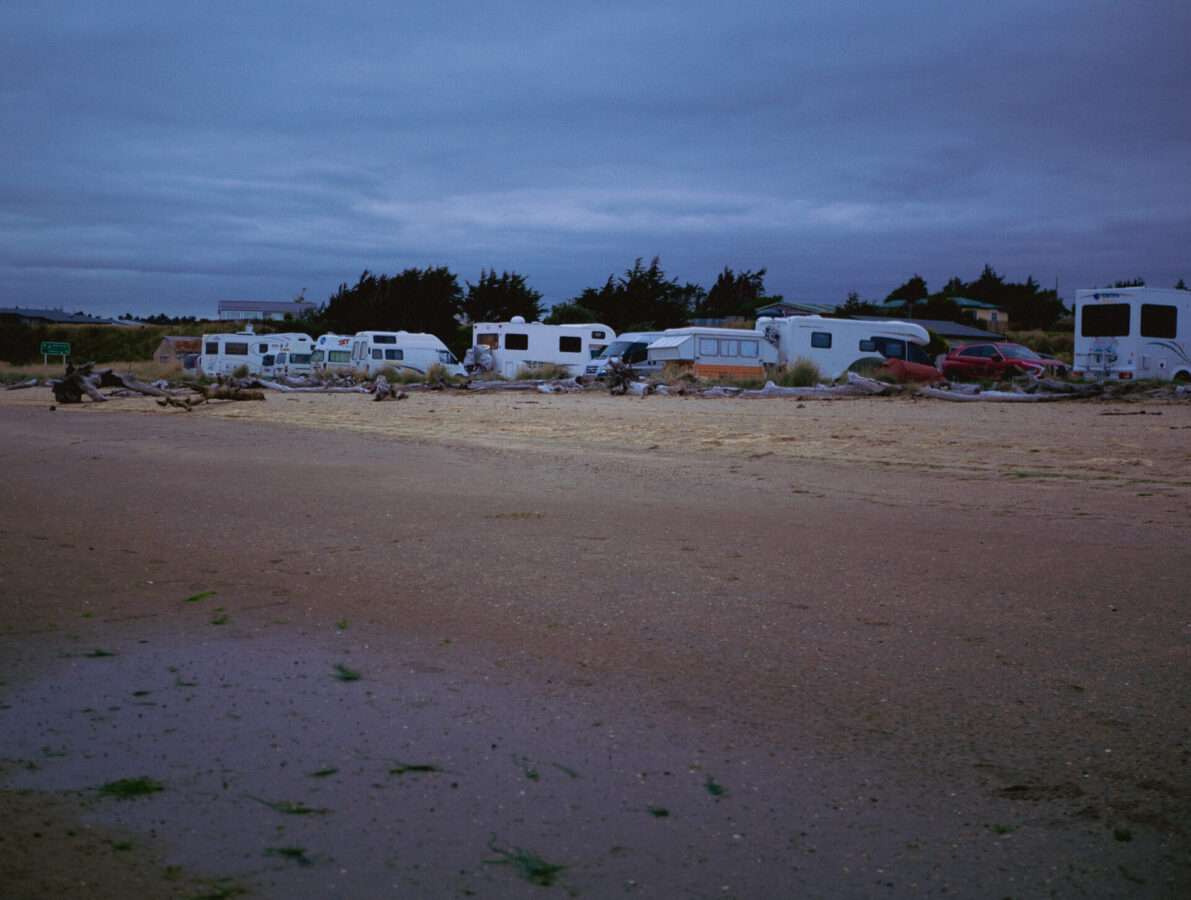
After buying, you will need to budget additional money for the maintenance and upkeep of your van. This includes paying for regos, WoFs, RUCs, services and oil changes, and any repairs you may need or updates you’d like to make to the van.
It’s also a good idea to get some sort of insurance on your van in the event that you get in an accident. (Not required in New Zealand but good for peace of mind.)
WoFs: WoF costs vary by mechanic, but in general they are around $90 for the inspection, not including any repairs that may be needed.
Regos: A rego license can be paid online from anywhere from one month and up to one year. Most car owners just pay for the yearly rego. The price varies for passenger cars based on petrol or diesel use: for petrol cars, a yearly rego costs $106, and for a diesel car, it will cost $175 for the year.
RUCs: When paying for RUCs, you pay by every 1000 kms, which costs $76. The price goes up for every additional 1000 kms you want to pay for, so for example 5000 kms would be $380. These are supposed to be paid for in advance and are required to be displayed on your dash.
Other types of accommodation you might have to pay for: Since freedom camping is only limited to certain spots, there may be some areas of the country you visit that just don’t have many freedom camping options (like Queenstown or the West Coast of the South Island), or the sites might fill up before you get there. In these instances, you might have to pay for a campground or some other type of accommodation. There were a few times when we had to stay at a hostel for a night while our van was getting work done also. These are just a few examples of some times you might have to or want to pay for a place to park/sleep.
Overall Costs Case Study (My Experience):
I will give you an example from my experience. We bought a 1997 Toyota Hiace Hightop with around 260,000 kms with an indoor kitchen and a second battery but otherwise a basic conversion build. We spent $200 on a pre-purchase inspection which indicated a few things that may need attending to later on, but we decided to buy it anyway, knowing that we would have to put some money into it. It was one of the cheapest hightops on the market at that time, and we bought it for $11,500 NZD.
During the first three months of owning our van, we paid for some repairs (breaks, suspension, new front tires) and services (WoF inspection, wheel alignment, rego) ($3675). We spent additional money on getting a roof vent installed for better ventilation and a whole new bed setup ($1500). Our only other main expenses after that were an oil change and service ($200), another WoF ($100), RUCs ($723) and a DIY rust removal and paint job ($200).
Aside from updating and repairing the van, we also bought insurance for it, which came out to $99 every month for some peace of mind (a total of $693, since we only had the insurance for 7 months).
The total comes to about $7100 NZD. This combined with the initial buying costs ($200 + $11,500) comes to a grand total of about $18,800 NZD for the year of living in our van. (This calculation doesn’t include the price we paid for gas.)
This may seem like an exorbitant amount of money, and believe me, when we forked over that $3500 on repairs, we were not very happy about it. If we had not been here on a Working Holiday Visa with the ability to make money, we probably wouldn’t have been able to afford all of these extra costs and also keep the van and continue traveling around. It was also easier splitting all these costs between the two of us, rather than having that burden on just one solo traveller.
At the end of our year, we sold our van for $10,000 NZD ($3,000 below our asking price – we sold in the buyer’s market). Many people would say that we had a “loss” of $8,800. But in my mind, this cost split between the two of us, for a whole year living in our van, only comes out to about $85 per person per week, which is very good for New Zealand. So while we were a little bit “unlucky” in that we got stuck with some expensive repairs, in the end we still made out pretty good overall with how much we spent on our van over the year. However, if these repairs happened on a shorter 4 or 6 month trip, the savings we would’ve made would’ve been much less than over our 12 months.
This certainly isn’t everyone’s experience. It is only an example from my experience, but I think it’s important to share because some people come to New Zealand thinking they can have a van for a year without spending any money at all on accommodation, because they will sell it at the end. Hell, some people do get to do that. Some people might even make a profit when they sell their van. But there are also quite a few people that have to spend significant amounts of money on repairs, given that these vans are old and have high mileage, and I just think it’s important to keep this in mind so that you can be mentally and financially prepared for any outcome.
Ready for your adventure?
If you are planning on buying a van in New Zealand as an international tourist or traveler on a Working Holiday Visa, then most likely you will be selling it at some point in the future. To help prepare you for this additional challenge, I have written up another post detailing everything about how to successfully sell your van, which I learned from personal experience selling my van during the SLOW season. Selling vans in New Zealand can be a huge challenge for a lot of travelers so I highly recommend reading that and preparing yourself for a successful sale (even if you are months away)!
I hope that this post helped you in your quest to buy a converted van in New Zealand! I wish you all the best of luck. Drop a line below to let me know how it went or if you have any questions. 🙂


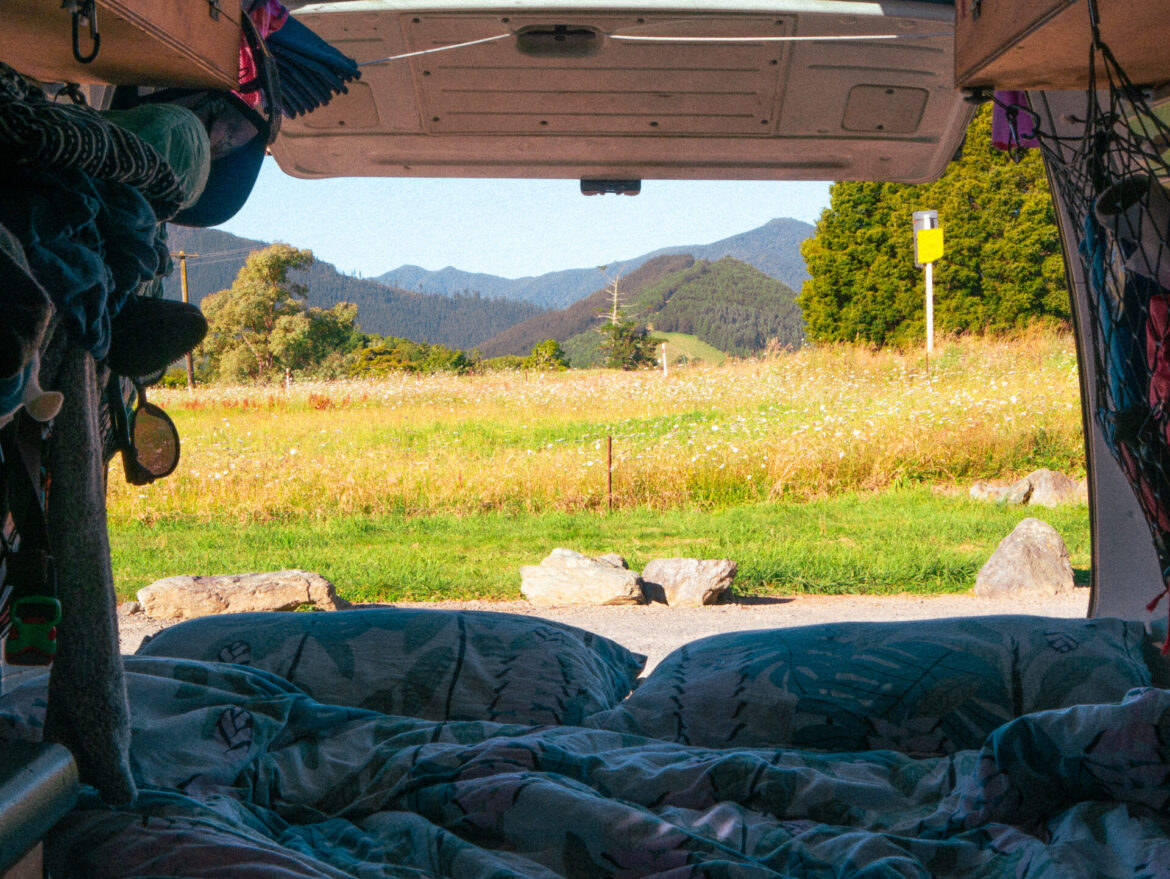
Leave a Reply